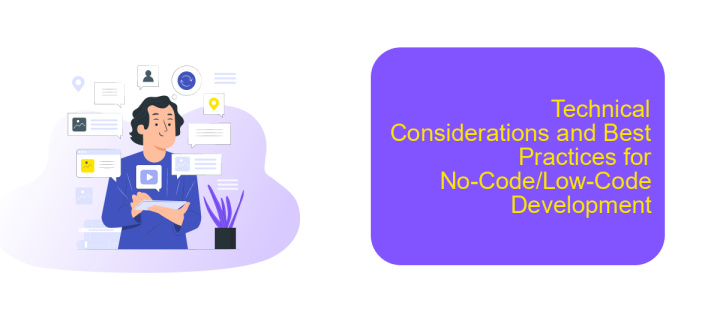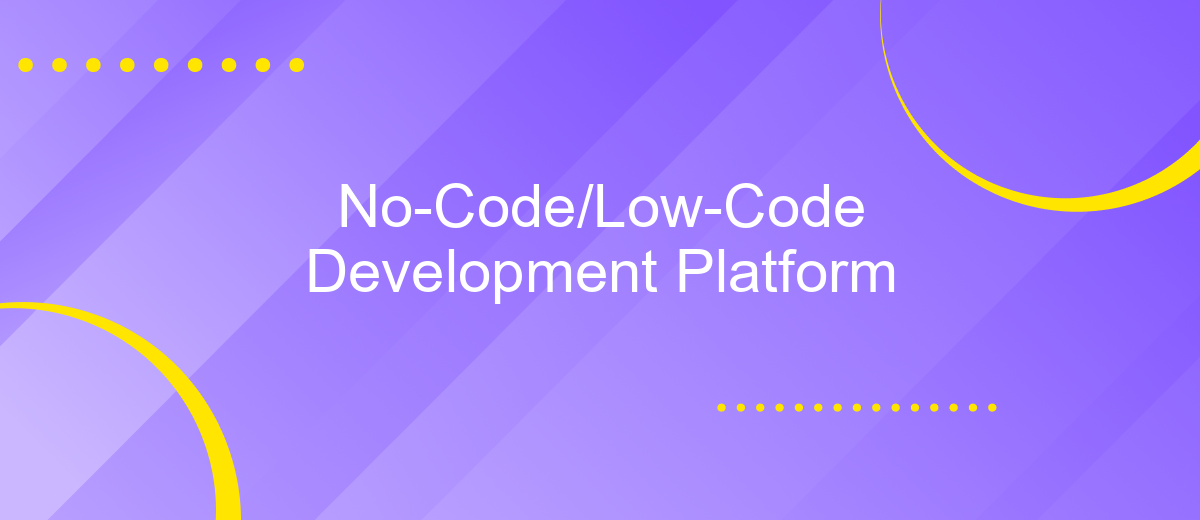No-Code/Low-Code Development Platform
The rise of No-Code/Low-Code development platforms is revolutionizing the way software is created, making it accessible to a broader audience beyond traditional programmers. These platforms empower users to build functional applications with minimal coding knowledge, significantly reducing development time and costs. As businesses strive for agility and innovation, No-Code/Low-Code solutions are becoming indispensable tools in the modern tech landscape.
Introduction to No-Code/Low-Code Development Platforms
No-Code/Low-Code development platforms are revolutionizing the way applications are built by enabling users to create software without traditional coding. These platforms provide intuitive drag-and-drop interfaces, pre-built templates, and other tools that simplify the development process, making it accessible to non-developers and accelerating the time to market.
- Drag-and-drop interfaces for ease of use
- Pre-built templates for faster development
- Integration with various services and APIs
- Reduced development costs and time
Platforms like ApiX-Drive facilitate seamless integration with other applications, enabling users to automate workflows and connect various services without writing code. This democratization of software development allows businesses to innovate rapidly, reduce dependency on IT departments, and respond more swiftly to market demands.
Benefits and Use Cases of No-Code/Low-Code Platforms

No-Code and Low-Code platforms offer numerous benefits, including accelerated development processes, cost savings, and increased accessibility for non-technical users. These platforms enable businesses to quickly create and deploy applications without the need for extensive coding knowledge, thus reducing the dependency on specialized IT staff. By leveraging visual development tools and pre-built templates, organizations can prototype and iterate solutions faster, leading to more agile and responsive development cycles.
Use cases for No-Code/Low-Code platforms are diverse, ranging from simple workflow automation to complex enterprise applications. For instance, small businesses can automate routine tasks like data entry and customer relationship management, while larger enterprises might use these platforms to streamline internal processes or integrate various systems. Services like ApiX-Drive facilitate seamless integration between different applications, enhancing the functionality of No-Code/Low-Code solutions. This allows users to connect multiple tools and automate data transfer without manual intervention, significantly improving operational efficiency.
Examples and Comparison of No-Code/Low-Code Platforms

No-Code and Low-Code platforms are revolutionizing the way businesses develop applications by enabling users with little to no programming skills to create functional and scalable solutions. These platforms offer a range of tools to simplify and accelerate the development process.
- Appgyver: A no-code platform providing a comprehensive suite of tools for building professional-grade applications.
- OutSystems: A low-code platform that allows for rapid application development with advanced customization options.
- ApiX-Drive: A service that facilitates easy integration between various applications, making it simpler to automate workflows without coding.
- Bubble: A no-code platform focused on creating web applications with drag-and-drop functionality.
- Mendix: A low-code platform that supports both business and IT teams in developing applications collaboratively.
Each of these platforms offers unique features tailored to different needs. For example, ApiX-Drive excels in simplifying the integration process, allowing users to connect different services and automate workflows effortlessly. By choosing the right platform, businesses can significantly reduce development time and costs while maintaining high levels of customization and functionality.
Technical Considerations and Best Practices for No-Code/Low-Code Development

When leveraging No-Code/Low-Code development platforms, it's essential to consider technical aspects to ensure optimal performance and scalability. These platforms offer rapid development capabilities but come with their own set of challenges that need to be addressed for successful implementation.
One of the primary considerations is the integration with existing systems. Many No-Code/Low-Code platforms provide built-in connectors, but it's crucial to evaluate their compatibility with your current infrastructure. Additionally, security should be a top priority, ensuring that data integrity and privacy are maintained throughout the development process.
- Evaluate platform compatibility with existing systems.
- Prioritize data security and privacy.
- Utilize comprehensive testing and debugging tools.
- Implement best practices for version control.
- Leverage integration services like ApiX-Drive for seamless connectivity.
Adopting a No-Code/Low-Code approach requires a strategic mindset. Continuous monitoring and optimization are essential to maintain performance and scalability. By following these best practices and leveraging tools like ApiX-Drive for integrations, organizations can maximize the benefits of No-Code/Low-Code platforms while minimizing potential risks.
- Automate the work of an online store or landing
- Empower through integration
- Don't spend money on programmers and integrators
- Save time by automating routine tasks
Future Trends and Outlook of No-Code/Low-Code Platforms
The future of No-Code/Low-Code platforms is promising, driven by the increasing need for rapid application development and the democratization of technology. As businesses strive to innovate quickly, these platforms enable non-technical users to create and deploy applications without deep programming knowledge. This trend is expected to continue, with advancements in AI and machine learning further simplifying the development process and enhancing platform capabilities. The integration of these technologies will allow for more intelligent automation and predictive analytics, making No-Code/Low-Code solutions even more powerful and versatile.
Another significant trend is the expanding ecosystem of integrations and APIs, which will play a crucial role in the growth of No-Code/Low-Code platforms. Services like ApiX-Drive are at the forefront, offering seamless integration capabilities that connect various applications and automate workflows. This will enable businesses to build more complex and interconnected systems without the need for extensive coding. As these platforms and integration services evolve, they will continue to lower barriers to entry, fostering innovation and efficiency across industries.
FAQ
What is a No-Code/Low-Code Development Platform?
Who can benefit from using a No-Code/Low-Code Development Platform?
How secure are applications built on No-Code/Low-Code platforms?
Can No-Code/Low-Code platforms be used for integrating different software and automating workflows?
What are the limitations of No-Code/Low-Code Development Platforms?
Apix-Drive is a simple and efficient system connector that will help you automate routine tasks and optimize business processes. You can save time and money, direct these resources to more important purposes. Test ApiX-Drive and make sure that this tool will relieve your employees and after 5 minutes of settings your business will start working faster.


